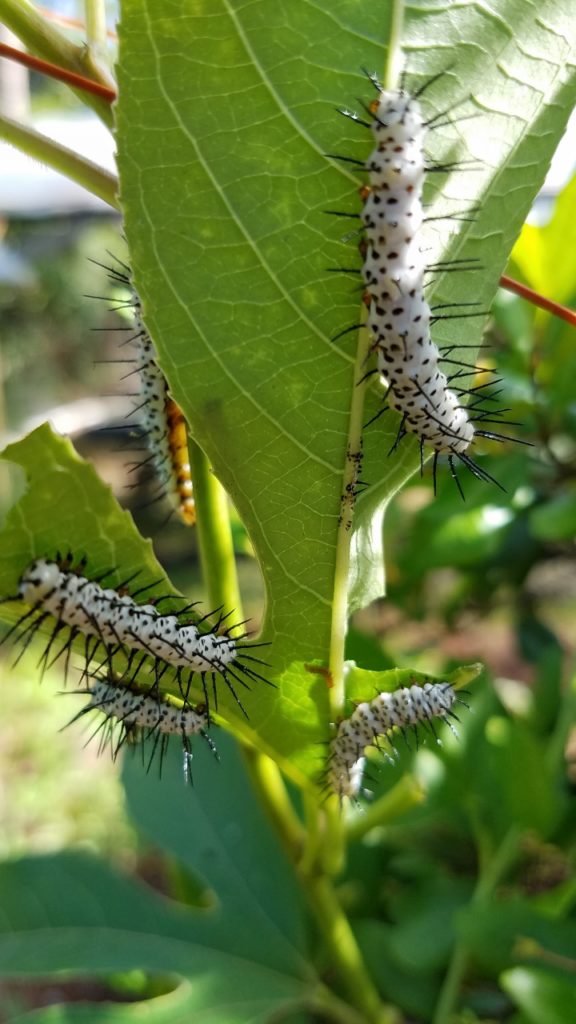
Maypop Passionflower
Passiflora incarnata
Maypop Passionflower is found from Florida to Pennsylvania and west to Texas. It likes dry soil in full sun and tends to set the most fruit when climbing on something.
Climbing may help it become more available to carpenter and bumblebees which are its primary pollinators. We no longer have these pollinators in South Florida, which explains why fruit set is nearly zero down here. You can hand pollinate the flowers yourself with a soft brush. The flowers only live for one day, so get out early to do this.
The leaves normally have three palm shaped leaflets, but may have five. There are two glands, or bumps, where the leaf stem meets the leaflets. The similar looking Passiflora incense is a hybrid of Passiflora incarnata x P. cinccinata – which is from South America.
Incense Passiflora has five leaflets and the glands are midway down the leaf petiole (stem). This is commonly sold in stores and suckers too freely. It becomes a nuisance and gets a virus that ruins its appearance. Click for more info. Maypop sends up some root suckers too, but they stay closer to the main plant.
Both the Maypop Passionflower and Incense Passiflora have purple flowers, so look for the leaf lobes and glands to identify the two.
As you can see in this picture, zebra longwing caterpillars love the leaves and will strip the plant clean. Gulf fritillaries often lay their eggs on this plant. Sometimes you can locate a population of Maypop while driving by sunny fields, canal banks or other open areas by noticing the groups of fritillaries hovering around them.
Although this plant prefers dry soil, I have grown it in areas that have short periods of shallow flooding during the rainy season. It dies back to the ground during the winter, yet always seems to have some above ground growth. The vines will grow thirty feet during the growing season.
Try this plant in several areas of your yard until you find a location where they come back each year. This is a great plant to have for butterflies and for you to eat the sweet fruit.
Try a mix of Maypop, Corky and White Flowered Passionvine to provide a larval paradise for zebra longwings, gulf fritillaries and Julia butterflies. It may take a while, but you will have an amazing number of these butterflies in your yard.